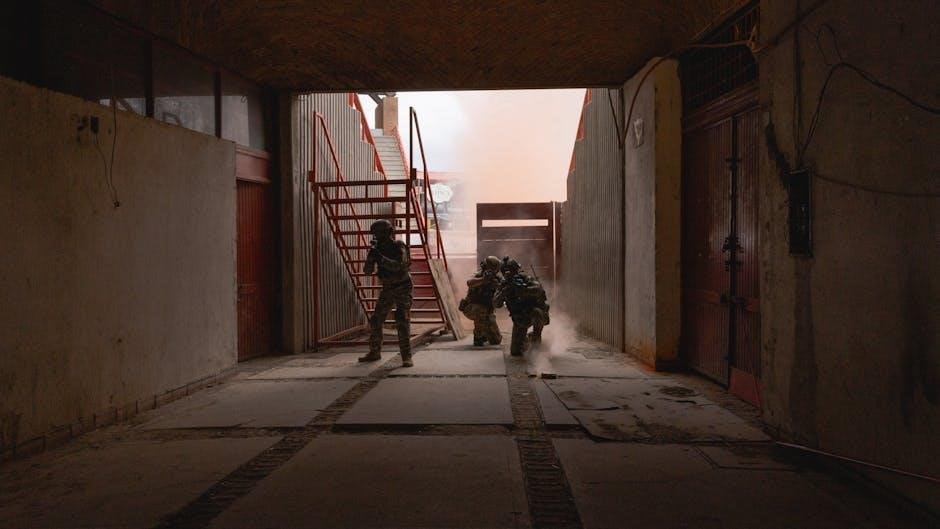
Urban tank warfare involves complex tactics and strategies for armored operations in densely populated areas. Historical battles like Hue City, Mogadishu, and Grozny highlight its challenges and evolution, emphasizing coordination with infantry and engineers to mitigate vulnerabilities. Modern advancements, including reactive armor and situational training, address ambush risks and anti-tank threats, shaping future doctrines for combined arms operations in urban terrain.
1.1 Historical Context of Urban Tank Combat
The use of tanks in urban warfare traces back to World War II, with battles like Stalingrad and Berlin demonstrating their role in city combat. Early urban tank operations revealed vulnerabilities due to narrow streets and ambush risks. Historical conflicts, including the Revolutionary War and Civil War, show urban combat’s long-standing challenges. Post-WWII, urban warfare shifted from rural to densely populated areas, highlighting the need for adapted tactics to counter anti-tank threats and enhance mobility in confined spaces.
1.2 Evolution of Tank Tactics in Urban Environments
Tank tactics in urban environments have evolved from World War II’s limited strategies to modern combined arms approaches. Early operations lacked coordination with infantry, leading to high vulnerabilities. Post-war, tactics shifted to emphasize close infantry-tank cooperation, fire support, and situational training. Modern advancements, like reactive armor and precision firepower, address ambush risks and enhance survivability in densely populated areas, as seen in recent conflicts like Ukraine.

Historical Case Studies of Urban Tank Combat
Historical battles like Hue City, Mogadishu, and Grozny highlight the challenges of urban tank warfare. These case studies reveal strategic vulnerabilities and the evolution of tactics in densely populated environments.
2.1 The Battle of Hue City, Vietnam (1968)
The Battle of Hue City showcased the challenges of urban tank warfare. M48 Patton tanks played a pivotal role, providing firepower and mobility in narrow streets. However, their effectiveness was hindered by ambushes, poor visibility, and restrictive terrain. Infantry-tank coordination was crucial, highlighting the need for combined arms tactics in urban combat. This battle remains a key lesson in adapting armored forces to densely populated environments.
2.2 Mogadishu, Somalia (1993)
Mogadishu highlighted the dangers of urban warfare for armored vehicles. Despite limited tank deployment, the battle underscored vulnerabilities to anti-tank missiles and ambushes. The need for enhanced situational training and combined arms tactics became evident. This conflict remains a critical case study in modern urban warfare, emphasizing the importance of adaptive strategies and protection systems for armored units in densely populated zones.
2.3 Grozny, Chechnya (1994-1995)
The Battle of Grozny revealed severe challenges for armored forces in urban combat. Russian tanks faced heavy casualties due to poor coordination with infantry and engineers. Narrow streets and ambushes by Chechen fighters highlighted vulnerabilities in urban terrain. This conflict underscored the need for advanced tactics, combined arms operations, and better protection systems for armored units in densely populated environments.
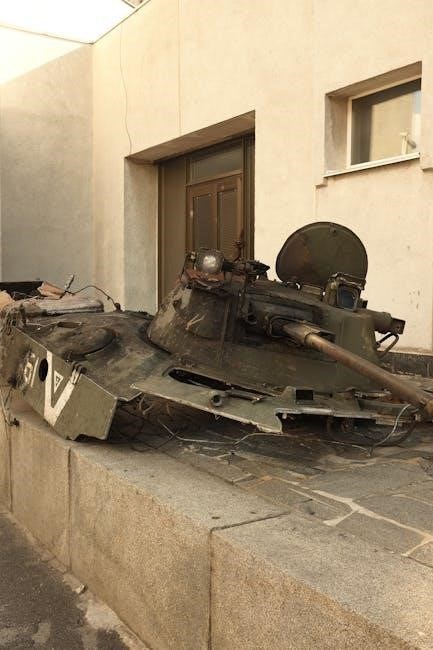
Unique Challenges of Urban Tank Warfare
Urban tank warfare faces reduced mobility, increased vulnerability, and heightened ambush risks. Narrow streets and dense structures amplify these challenges, requiring advanced tactics and coordination.
3.1 Reduced Mobility and Increased Vulnerability
Tanks in urban environments face reduced mobility due to narrow streets, rubble, and debris, making them vulnerable to ambushes. The proximity of attackers in densely populated areas increases the risk of anti-tank missile strikes and improvised explosive devices (IEDs). Urban terrain negates tanks’ advantages of speed and open-field maneuverability, highlighting the need for close infantry support and advanced protective systems to mitigate these risks effectively.
3.2 Ambush Risks and Anti-Tank Missile Threats
Urban environments amplify ambush risks for tanks, as attackers exploit confined spaces and cover. Portable anti-tank missiles, such as RPGs, pose significant threats due to their accessibility and lethality. Modern conflicts highlight the need for active protection systems and improved situational awareness to counter these dangers, ensuring tank survivability in high-threat urban settings.
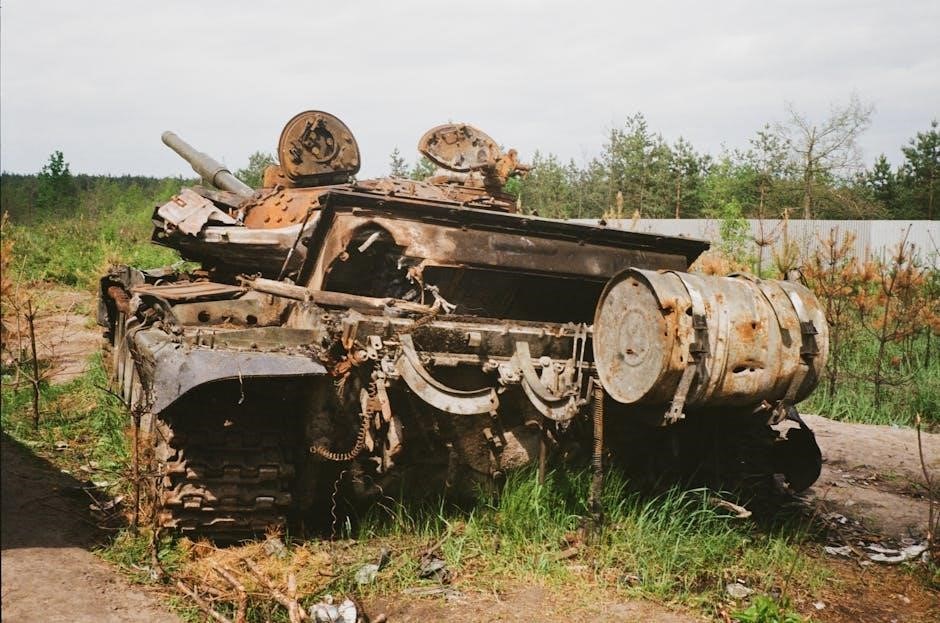
Combined Arms Tactics in Urban Warfare
Combined arms tactics in urban warfare require close coordination between tanks, infantry, and engineers to overcome unique challenges, ensuring effective fire support and obstacle clearance.
Coordination between tanks and infantry is critical in urban warfare, ensuring mutual protection and effective targeting. Tanks provide suppressive fire and breach barriers while infantry clears buildings and neutralizes threats. This synergy enhances mission success in densely populated areas. Proper communication and situational awareness are essential to avoid friendly fire and maximize combat efficiency. Engineers play a vital role in urban combat by clearing paths, breaching walls, and neutralizing explosive hazards, enabling tanks to maneuver effectively. They provide critical support by creating entry points, reinforcing structures, and repairing infrastructure. Their expertise ensures operational continuity, allowing combined arms teams to adapt to the dynamic urban battlefield while maintaining tactical momentum and reducing risks to armored units. Modern urban tank tactics incorporate reactive armor, active protection systems, and advanced situational training, enhancing survivability and operational effectiveness in densely populated environments. Reactive armor and active protection systems (APS) significantly enhance urban tank survivability. Reactive armor counters anti-tank missiles by detonating explosives to disrupt warheads. APS detects and neutralizes incoming threats using interceptors, offering 360-degree protection. These technologies, combined with situational training, enable tanks to operate effectively in high-risk urban environments, mitigating vulnerabilities from ambushes and precision strikes, as seen in modern conflicts like Ukraine. Russia’s urban tank operations in Ukraine revealed critical vulnerabilities, emphasizing the need for advanced protection systems and improved tactics. The widespread use of anti-tank missiles forced adaptations, highlighting the importance of combined arms strategies and situational training. These lessons underscore the evolution of urban warfare, where modern threats demand innovative solutions to ensure tank effectiveness in dense, contested environments. Military doctrine emphasizes situational training and combined arms tactics for urban tank operations, guided by manuals like FM 90-10, ensuring effective preparation for complex urban environments.
FM 90-10 provides critical doctrine for urban operations, detailing tactics for combined arms teams. It emphasizes coordination between tanks, infantry, and engineers, addressing challenges like reduced mobility and ambush risks. The manual offers situational training guidelines, ensuring units are prepared for the complexities of urban warfare, aligning with modern case studies and historical lessons. Situational training prepares units for urban warfare’s unpredictability, focusing on realistic simulations and mission rehearsals. It emphasizes adaptability, coordination, and decision-making under stress. Historical cases like Mogadishu and Grozny inform these exercises, ensuring tanks and infantry operate cohesively. Modern advancements, such as reactive armor and hybrid threats, are integrated to enhance readiness for contemporary urban conflicts. Anti-tank missiles are crucial in urban warfare, offering portable and effective countermeasures against armored vehicles. Their impact is evident in conflicts like Mosul and Marawi, where they neutralize tank advantages, forcing adaptive tactics and highlighting vulnerabilities in dense environments. Portable anti-tank weapons have revolutionized urban warfare by enabling asymmetric forces to counter armored vehicles effectively. Their ease of use and lethality allow insurgents to ambush tanks in narrow streets, reducing their strategic advantage. This shift necessitates advanced tank defenses and coordinated tactics, as seen in conflicts like Ukraine, where such weapons altered battle dynamics significantly. The battles of Mosul and Marawi underscored the decisive impact of anti-tank weapons in urban warfare. In Mosul, ISIS employed portable missiles to devastating effect against coalition armor, while in Marawi, militants targeted Philippine tanks with improvised explosives. These conflicts highlight the critical need for combined arms tactics and advanced armor protection in densely populated combat zones. The future of urban tank warfare lies in adapting to hybrid threats and integrating advanced technologies. Modern tanks must evolve to counter asymmetric tactics, leveraging reactive armor and precision firepower while maintaining mobility and coordination with infantry in complex urban environments.
Hybrid threats and asymmetric warfare challenge conventional tank tactics in urban settings. Enemies employ irregular strategies, including ambushes and anti-tank missiles, to exploit the limitations of armored vehicles in dense terrain. Adapting to these threats requires innovative doctrines, such as combining active protection systems with situational training, ensuring tanks remain effective in dynamic urban combat environments while countering unconventional tactics. Modern urban environments demand evolved tank tactics, emphasizing coordination with infantry and engineers. Advanced systems like reactive armor and precision firepower enhance survivability and effectiveness. Training focuses on situational awareness and combined arms operations, ensuring tanks adapt to densely populated zones while mitigating collateral damage, keeping pace with emerging threats in contemporary urban warfare scenarios; Urban tank warfare demands coordinated tactics, combining armor with infantry and engineers to overcome reduced mobility and ambush risks. Historical battles highlight vulnerabilities, while modern advancements like reactive armor and situational training enhance survivability. The integration of combined arms operations remains critical, ensuring effective urban combat strategies while addressing asymmetric threats and hybrid warfare challenges. Military doctrine should prioritize advanced training in urban tank tactics, emphasizing situational awareness and combined arms coordination. Incorporating reactive armor and active protection systems is essential. Lessons from historical battles and modern conflicts, such as Ukraine, should inform updated strategies to address hybrid threats and asymmetric warfare, ensuring effective urban combat capabilities. Key resources include FM 90-10 and “Breaking the Mold: Tanks in the Cities.” Additional insights from case studies like Mosul and Marawi enhance urban warfare understanding.
Historical manuals like FM 90-10 provide foundational doctrine for urban operations, while case studies from Hue City, Mogadishu, and Grozny offer practical insights into tank tactics in urban warfare. These resources highlight the evolution of combined arms strategies and the challenges of armored operations in densely populated environments. Modern field manuals emphasize adaptive tactics for urban tank operations, incorporating lessons from conflicts in Ukraine, Mosul, and Marawi. These guides detail advanced strategies for combined arms teams, reactive armor, and situational training, ensuring military units remain effective in dynamic urban combat environments. They also address the growing threat of anti-tank missiles and hybrid warfare.4.1 Coordination Between Tanks and Infantry
4.2 Role of Engineers in Urban Combat
Modern Advancements in Urban Tank Tactics
5;1 Reactive Armor and Active Protection Systems
5.2 Lessons from the Russian Experience in Ukraine
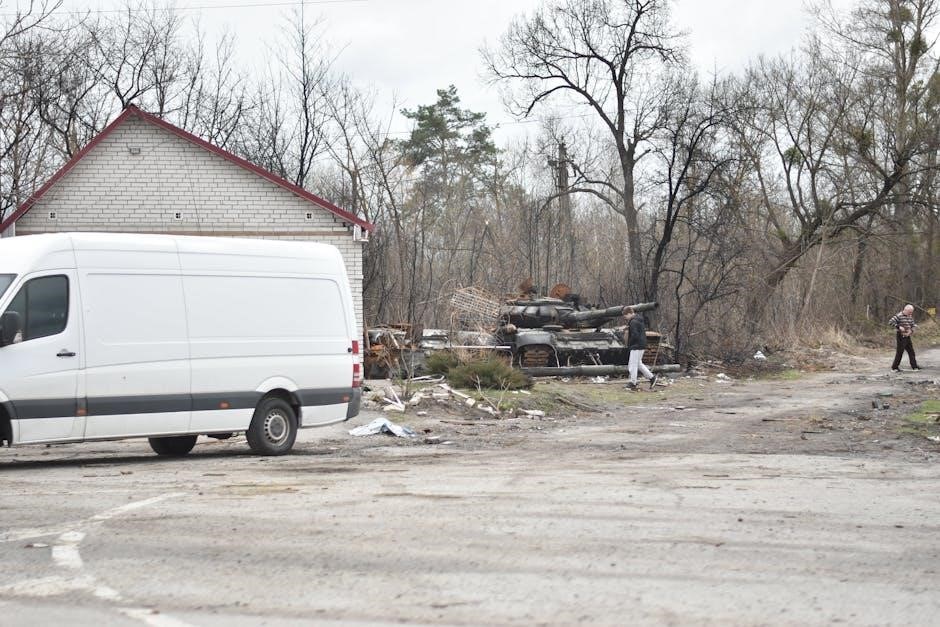
Doctrine and Training for Urban Tank Operations
6.1 Field Manual FM 90-10: Military Operations on Urbanized Terrain
6;2 Situational Training for Urban Warfare
The Role of Anti-Tank Missiles in Urban Warfare
7.1 Impact of Portable Anti-Tank Weapons
7.2 Case Studies from Mosul and Marawi
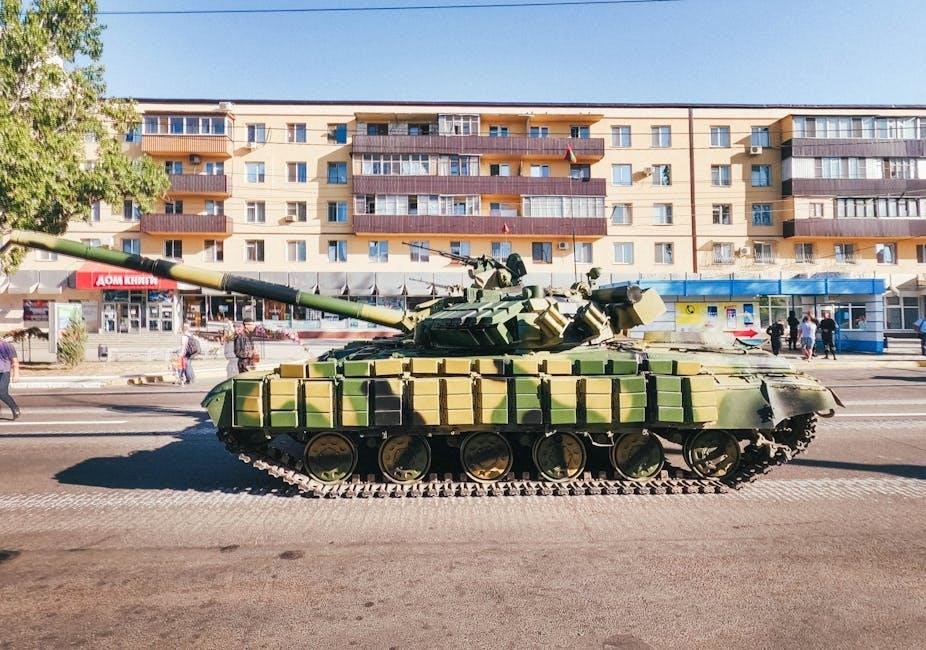
Future of Urban Tank Warfare
8.1 Hybrid Threats and Asymmetric Warfare
8;2 Adapting Tactics for Modern Urban Environments
Urban tank warfare requires adaptive tactics, coordination, and modern technology to address unique challenges, ensuring effective operations in densely populated environments while minimizing risks and collateral damage.9.1 Summary of Key Findings
9.2 Recommendations for Military Doctrine
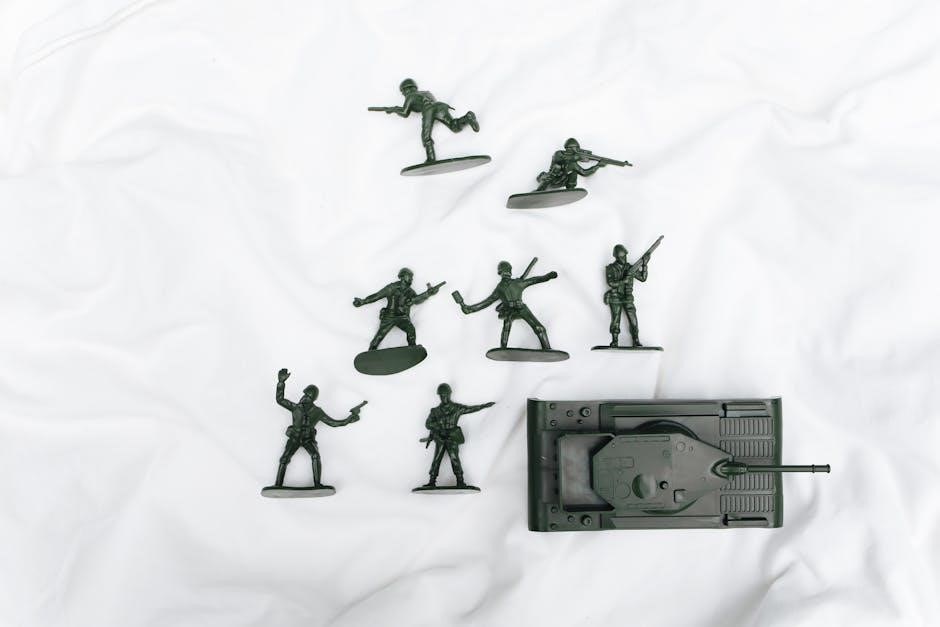
References and Further Reading
10.1 Historical Manuals and Case Studies
10.2 Modern Field Manuals and Tactical Guides